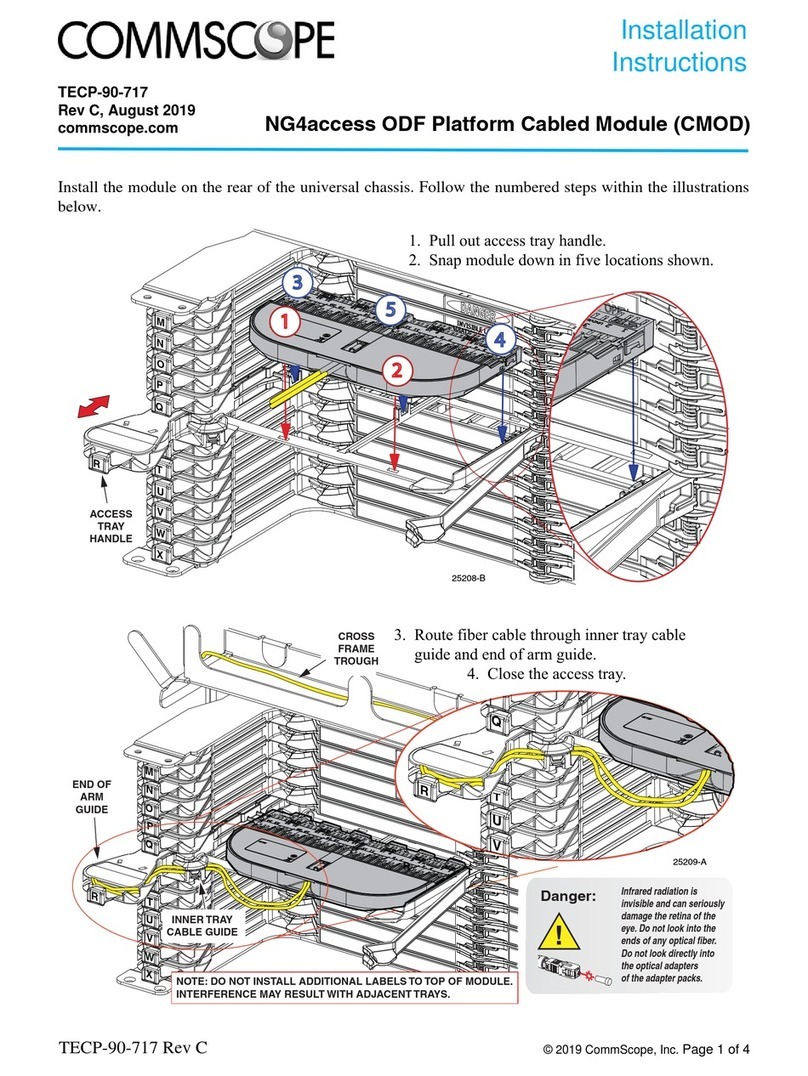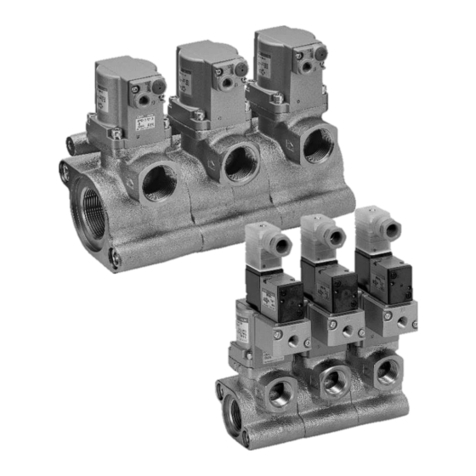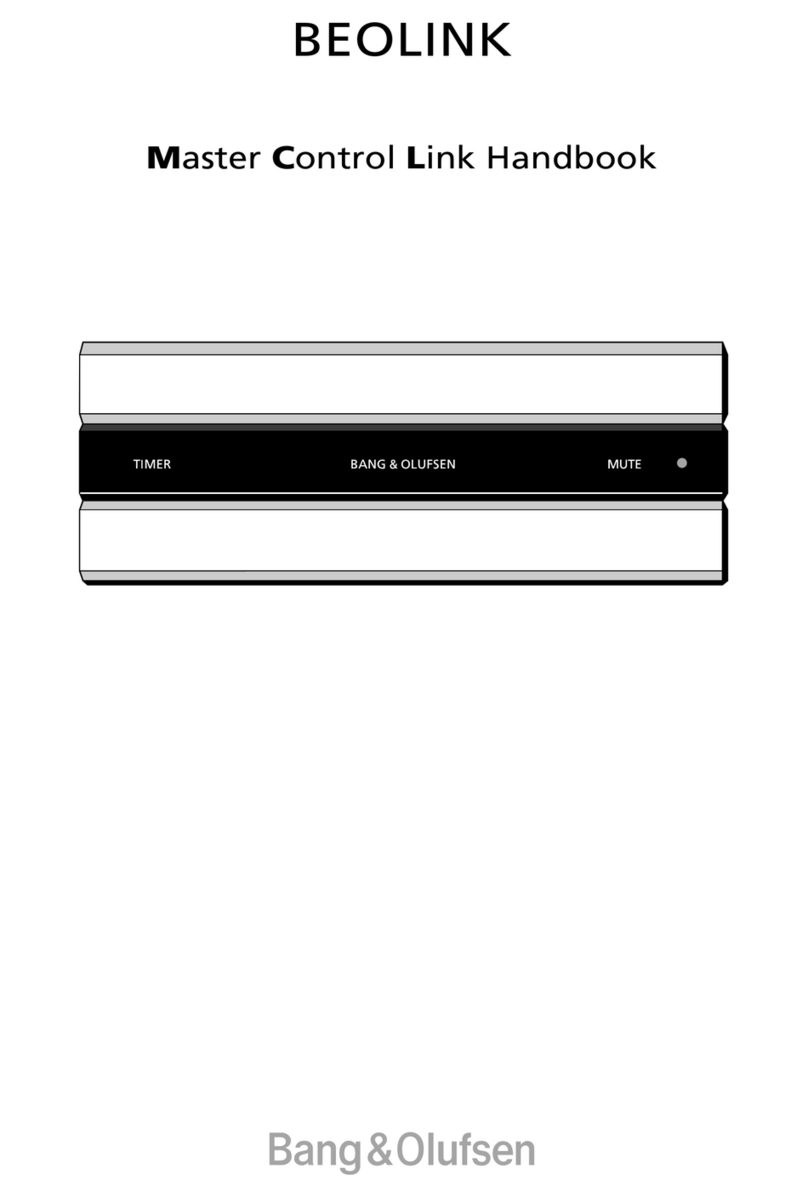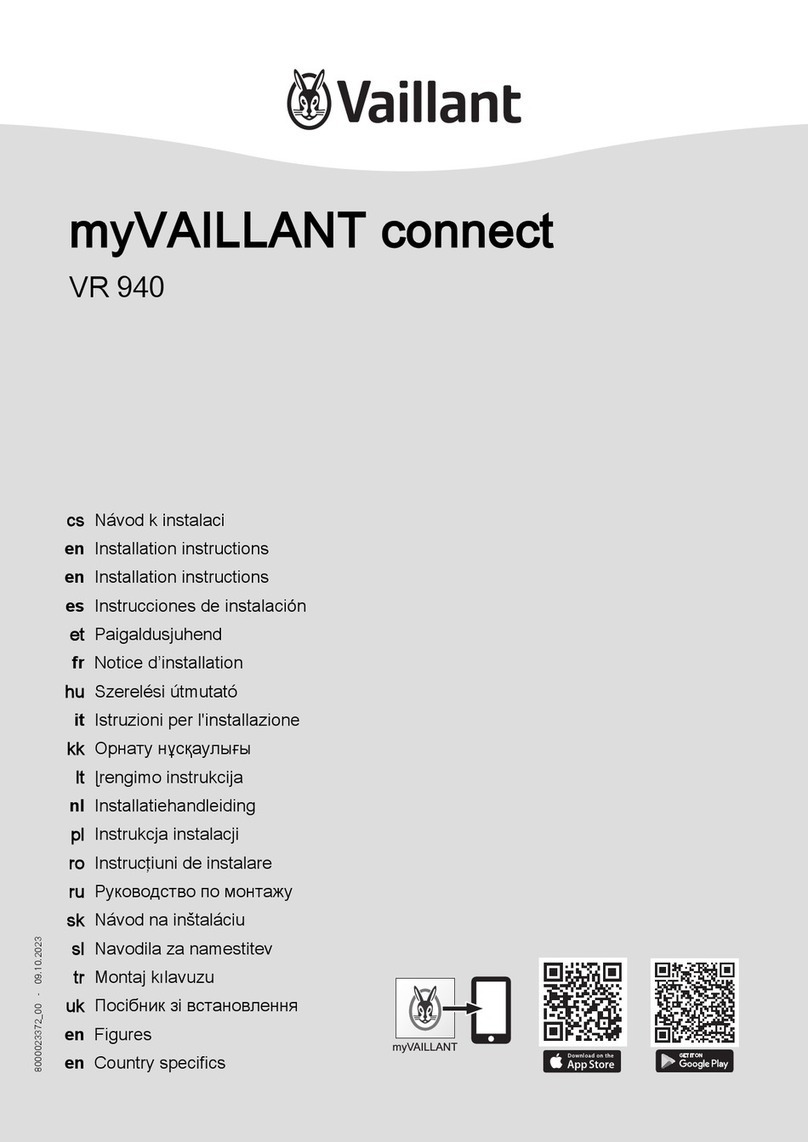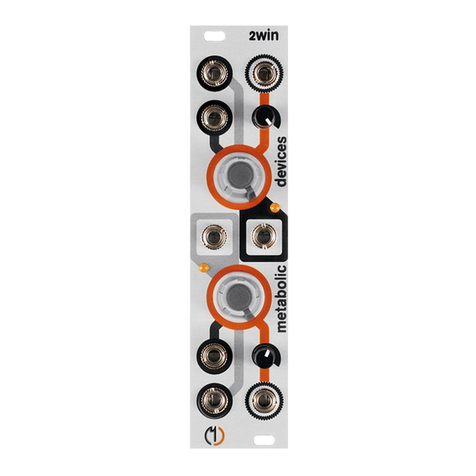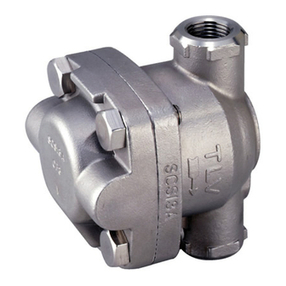NKT Photonics Koheras BASIK User manual

Instruction Manual
Koheras BASIK
Low noise single frequency laser module

Page 2
This product is protected by intellectual property rights including one or more of the following granted or pending
patents:
Patents
US7.809.029, US7.792.408, AU1007999, AU731781, B1.007.999, CA2.279.420, CH1.007.999, GE69.838.840.2,
DK1.007.999, F10.07.999, UK1.007.999, IRE1.007.999, LUX1.007.999, Mon1.007.999, P1.007.999, S1.007.999,
US6.151.429, AU736,870, AU772980, CA2.310.316, GE1040375, F1040375, UK1040375, US6.449.293
Patent applications
CA2.570.544, C2.0058.002.1131.7, EP05.754.189.8, N 20.070.420
Laser safety compliance:
IEC 60825-1:2007
FDA (Food & Drug Administration): 21CFR 1040.10 and 1040.11 (except for deviations pursuant to Laser Notice
50, dated June 24, 2007)
FDA accession number #12R0005-001
Issue:
05
Published: April 2016
Author: TOF
Copyright © 2016 by NKT Photonics A/S. All rights reserved. Reproduction or translations of any part of this work is prohibited.

Page 3
Table of Contents
1General..........................................................................................................................................................4
2Laser Safety ..................................................................................................................................................5
2.1 General Safety Aspects.........................................................................................................................5
2.1.1 Basic Operation and Use..............................................................................................................5
2.1.2 Organizational Measures..............................................................................................................5
2.1.3 Selection and Qualification of Personnel – Basic Responsibilities................................................6
2.1.4 Safety Instructions Governing Specific Operational Phases.........................................................6
2.2 Specific Safety Aspects.........................................................................................................................6
2.2.1 Physical Hazards..........................................................................................................................7
2.2.2 Personnel Safety...........................................................................................................................7
2.2.3 Constructive Safety Features........................................................................................................9
2.2.4 General Safety Features...............................................................................................................9
2.3 Safety Compliance List..........................................................................................................................9
2.4 Labeling.................................................................................................................................................9
2.4.1 Labels used on Koheras BASIK....................................................................................................9
2.4.2 Label Positions............................................................................................................................11
3Requirements ..............................................................................................................................................12
4Interface.......................................................................................................................................................13
4.1 Front Panel..........................................................................................................................................13
4.1.1 Optical Output(s).........................................................................................................................13
4.1.2 LEDs...........................................................................................................................................14
4.1.3 Handle ........................................................................................................................................15
4.1.4 Front Mounting Holes..................................................................................................................15
4.2 Rear Panel...........................................................................................................................................16
4.2.1 Electrical Interface ......................................................................................................................16
4.2.2 Heat Transfer Surface.................................................................................................................18
4.2.3 Guiding Hole...............................................................................................................................19
4.2.4 Rear Mounting Holes..................................................................................................................19
5Features and Functions...............................................................................................................................20
5.1 Adjustable Output Power.....................................................................................................................20
5.2 Optical Monitor Output.........................................................................................................................20
5.3Thermal Tuning ...................................................................................................................................21
5.4 Wavelength Modulation.......................................................................................................................21
5.4.1 Locking Koheras BASIK X15 to External Cavity .........................................................................27
5.5 Amplitude Modulation..........................................................................................................................28
5.6 Operating Mode...................................................................................................................................29
5.7 Trigger .................................................................................................................................................30
5.8 Auto-Start ............................................................................................................................................31
5.9 Emission Delay and Shutdown Delay..................................................................................................31
5.10 High Temperature Shutdown...............................................................................................................31
5.11 Power Verification................................................................................................................................31
6Interface Board............................................................................................................................................32
7Recommended Mounting.............................................................................................................................34
8Operation.....................................................................................................................................................35
8.1 Precautions..........................................................................................................................................35
8.2 Turning ON the Koheras BASIK ..........................................................................................................35
9Computer Controlled Operation...................................................................................................................36
10 Service.........................................................................................................................................................36
11 Electrical and Mechanical Specifications.....................................................................................................36
11.1 Module Dimensions.............................................................................................................................37
11.1 Dimensions with Adaptor Board ..........................................................................................................38

Page 4
1 General
Introduction
Please take the necessary time to read this manual. It contains important
information on safety issues concerning the usage of the Koheras BASIK low noise
single frequency laser module.
The safety might be seriously impaired if the instructions are not followed
carefully.
This manual covers the Koheras BASIK laser module, with the product numbers
beginning with K1x2.
The Koheras BASIK is a Class 3B laser and only persons who are familiar with laser
safety regulations are allowed to operate these modules.
WARNING: invisible radiation emitted from this laser.
CAUTION: Use of controls or adjustments or performance of procedure other
than those specified herein may result in hazardous radiation exposure.
If you have any questions concerning this product, please do not hesitate to contact
us at support@nktphotonics.com.
Description
Koheras BASIK is a single frequency distributed feedback (DFB) fiber laser system
in a new rugged package with passive vibration reduction, offered as single laser or
building block for e.g. multi channel DWDM systems.
The Koheras BASIK features ultra-narrow linewidth in the Hertz range and
exceptionally low frequency and intensity noise superior to other comparable
sources.
The Koheras BASIK is ideal for coherent sensor applications in oil/gas exploration,
perimeter and submarine detection, wind LIDAR and coherent optical
communications. Furthermore Koheras BASIK is an ideal seed laser for other laser
systems.
Koheras BASIK is designed so it can be used as plug-in module for the Koheras
ACOUSTIK multi-channel laser system, as seed laser for the Koheras ADJUSTIK
and as a stand-alone laser module.
A PC application is available for monitoring and control of the Koheras BASIK.
Please refer to the software manual for more information about how to use the
graphical user interface.
It is recommended to keep this manual in the area close to the Koheras BASIK
module, so operators can use it as reference book if required.

Page 5
2 Laser Safety
Never switch on or attempt to operate the Koheras BASIK before reading,
understanding and fully familiarizing yourself with the contents of this
chapter.
Introduction
This chapter is divided into four sections:
•General Safety Aspects
Explains aspects relating to the safe operation of the laser device. See
section General Safety Aspects.
•Special Safety Aspects
Outlines the risks specific to working procedures with and on this laser
device. See section Specific Safety Aspects.
•Safety compliance list
See section Safety Compliance List.
•Overview of safety-relevant labels
Shows the design and describes the safety labels. See section Labels.
•Laser goggles.
See section Laser protective goggles.
2.1 General Safety Aspects
2.1.1 Basic Operation and Use
Basic Safety
The Koheras BASIK has been designed in accordance with state-of-the-art
standards and recognized safety rules. Nevertheless, its use can constitute a risk to
the user or third parties or cause damage to material property.
The Koheras BASIK system is not approved nor tested for use in treatment or
diagnostics of human and animals and does not comply with European, US or
Rest of World requirements for medical device lasers.
Warning: Potential eye and skin burns! Only use the laser according to the
procedures described in this manual. Using the laser outside the scope of this
manual is not covered by the warranty.
The Koheras BASIK must be used only in perfect conditions and according to the
procedures described in this manual.
Follow the instructions in this manual, and only let safety conscious persons, who
are fully aware of the risks involved, operate the Koheras BASIK.
Any functional disorders, especially those affecting the safety of the Koheras BASIK,
must be rectified immediately.
2.1.2 Organizational Measures
Laser Safety Officer
In accordance with the valid national regulations for prevention of accidents, the
user is required to appoint a responsible person as the Laser Safety Officer (LSO).
His responsibility is to effect the knowledgeable evaluation of laser hazards and to
monitor and enforce their control.
The instruction manual must always be at hand where the Koheras BASIK is used.
In addition to the operating instructions, observe and instruct the user in all other
generally applicable legal and other mandatory regulations relevant to accident
prevention.

Page 6
Protective
Equipment
These compulsory regulations also deal with the issuing and/or wearing of personal
protective equipment. The necessity of reading the instruction manual applies
especially to persons working only occasionally on the Koheras BASIK.
Use protective equipment, wherever required by the circumstances or by law.
Warning: Risk of serious injury through incorrect operation! Personnel
entrusted to operate the Koheras BASIK must have read the instruction
manual and in particular the safety instructions.
Safety Labels
Ensure that all safety-relevant labels are attached to the laser device in accordance
with the label location diagrams in Section Labeling and local regulations. Make sure
that these labels are always complete and perfectly legible.
If any labels are missing, immediately inform NKT Photonics A/S. In the event of
safety relevant modifications or changes in the behavior of the Koheras BASIK
during operation, stop the laser device immediately and report the malfunction to
NKT Photonics A/S.
Never make any modifications, additions or conversions which might affect safety.
This also applies to the installation and adjustment of safety devices.
2.1.3 Selection and Qualification of Personnel – Basic
Responsibilities
Qualified Personnel
Make sure that only authorized personnel work on or with the Koheras BASIK.
Statutory minimum age limits must be observed. Employ only trained or instructed
staff and set out clearly the individual responsibilities of the personnel for operation
and set up.
2.1.4 Safety Instructions Governing Specific Operational Phases
Precautions
Take the necessary precautions to ensure that the Koheras BASIK is used only
when in a safe and reliable state.
In the event of malfunctions, stop the laser device immediately and lock it. Have any
defects rectified immediately.
Before starting the Koheras BASIK ensure that nobody is at risk. Brief operating
personnel before beginning special operations, and appoint a person to supervise
the activities. Ensure that the operations area is adequately secured.
2.2 Specific Safety Aspects
Specific safety aspects are:
•Physical hazards related to the system. See Section Physical Hazards.
•Protection of the users of the system against these hazards. See Section
Personnel Safety.
•Constructive protective measures against these hazards. See Section
Constructive Safety Features.
Lasers and laser systems are classified according to their relative hazards. These
devices have been classified under the international Standard IEC 60825-1:2007
and meet 21CFR 1040.10 and 1040.11 (except for deviations pursuant to Laser
Notice 50, dated June 24, 2007).
Within this classification, the Koheras BASIK is a Class 3B laser

Page 7
2.2.1 Physical Hazards
Warning
The laser beam is very dangerous to the eyes and skin!
The following are hazardous,
•Direct radiation-light as it leaves the laser.
•Reflected radiation-light which has hit a surface and bounced off.
•Diffuse radiation-light, which has hit a surface, bounced off, and scattered.
Emitted Light
In case of malfunction the Koheras BASIK may provide laser radiation with power
levels up to 500 mW. The operating wavelength is between 900 nm to 2100 nm.
Despite the non-ionizing nature of the operating wavelengths, damage can still occur
to living tissue as a result of heat produced during radiation absorption. All radiation
of the Koheras BASIK lies outside the visible range. Suitable beam dumps must be
used at all times when the laser product is operating.
In general, the maximum permissible radiation exposure for the skin is several times
greater than for the eye. Safety measures with regard to the radiation hazard are
therefore mainly based on dangers for the eye. Not only are the direct laser beam
hazardous, but unchecked reflections of laser light also constitute a potential hazard.
2.2.2 Personnel Safety
Personnel Protection
The Koheras BASIK is a Class 3B laser.
Warning:
Risk of serious injury! Always wear protective eyewear when there is a chance of
exposure to radiation from the laser. Before putting on the protective eyewear, check
them for any obvious defects. As the filter in the protective eyewear provides
protection for only a narrow band of wavelengths, make sure you are wearing the
appropriate protective eyewear for the laser device in question. Check with your
Laser Safety Officer or other safety personnel for guidance in selecting the
appropriate eyewear.
Radiation Safety
The Koheras BASIK emits near-infrared radiation (900-2100 nm), which constitutes
a hazard to personnel during periods of operation.
Protective Eyewear
The ANSI (American National Standards Institute) standard for safe use of lasers
requires that a set of protective goggles blocking the appropriate laser wavelength
should be worn while operating or servicing Class 3B lasers.
Clearly label the goggles with an optical density and the specified wavelength. To
avoid confusion, keep these goggles separate from other safety glasses and
personal protective equipment.
Using the wrong type of goggles is dangerous. It can be worse to have improper
eyewear and a false sense of security than to have no eyewear and take
precautions based on the absence of protection. Even if you are wearing protective
goggles, never look directly into the beam; intense laser radiation is capable of
destroying the protective filter.
Eye Protection
Warning:
Potential eye burns! Only use the laser according to the procedures described in this
manual. Safety interlocks are only to be overruled by authorized personnel.
The following guidelines describe some of the actions necessary to avoid injury
caused by the laser beam. Always follow these guidelines and take additional

Page 8
precautions if necessary.
•When eyewear is necessary, make sure it provides full protection, that is, it
must have sufficient optical density (OD) to reduce exposure from an
enabled laser beam (either direct beam or specular reflection) to a level
below the maximum permissible exposure (MPE. The MPE and OD
requirement must be evaluated for each enabled laser beam).
•Laser eyewear protection must be labeled with wavelength-dependent OD
information.
•Make sure that all personnel in the vicinity of the laser wear protective
eyewear.
•Permit only qualified personnel to operate the laser.
•Never intentionally look directly into any laser beam.
•Avoid indirect viewing of direct or reflected laser radiation. Specular
reflections (from reflective surfaces) can be as dangerous as the direct
laser beam. Do not view the beam through optical instruments unless the
optics is designed to filter the laser wavelength.
•Take precautions to ensure that there are no reflecting objects in the path
of the laser beam.
•Do not deviate from standard operating procedures when working with
laser equipment.
•Use lasers only in approved applications and locations. Take adequate
precautions to prevent unauthorized personnel from entering the area
where a Class 3B laser is operating. Do not use lasers around untrained
personnel. Ensure that all personnel in the area observe proper safety
precautions.
•Report all incidents of exposure to your supervisor.
•Clearly display warning signs indicating the laser enclosed area with an
additional warning light outside the door.
•Adhere to local and national regulations governing the safe use of lasers.
Depending on system variant the Koheras BASIK system provides infrared laser
emission between 900 and 2100 nm. Protective eyewear must provide sufficient
protection for these wavelengths. The laser protective goggles must provide
minimum OD 3+ protection.
A suggestion for protective eyewear could be goggles with FG1 filter from
LaserShield. More information can be found at:
http://www.noirlaser.com/filters/fg1.html
Skin Protection
Warning:
Potential skin burns! Direct and reflected laser radiation can burn exposed skin. Only
use the laser according to the procedures described in this manual. Safety interlocks
are only to be overruled by authorized personnel.
•Although the skin can withstand considerably higher radiation intensity than
the eyes, tissue may be burned to a greater or lesser degree, depending on
the radiation time and the irradiation intensity.
•Avoid contact between the skin and the beam, or specular reflections of the
beam. Reflections of the beam may be as dangerous as the beam itself.
Wear appropriate protective clothing to protect the skin whenever
necessary.

Page 9
2.2.3 Constructive Safety Features
Safety Features
The laser device is equipped with the following constructional safety features:
•Appropriate Class 3B label affixed to laser device enclosure (see section
Labeling).
•All parts of the laser where laser radiation may possibly escape are marked
with the appropriate adhesive danger signs (according to IEC 60825).
•The electrical interface of the Koheras BASIK includes pins for the laser
interlock circuit (see section Electrical Interface). The interlock switch shuts
down the laser remotely, for instance, if a door connected with the switch is
opened.
2.2.4 General Safety Features
General Safety
The Koheras BASIK is an OEM laser designed to be built into a laser system, such
as e.g. a multi-channel laser system. The Koheras BASIK therefore does not have
key-switch controlled laser operation. Depending on the state the laser was left in it
may or may not switch on when powered up.
2.3 Safety Compliance List
CE Approval
The Koheras BASIK is CE-marked and has complies with FCC and VCCI as well.
FDA Approval
The Koheras BASIK and complies with 21CFR 1040.10 except for deviations
pursuant to Laser Notice 50, dated June 24, 2007.
UL and CSA
Approval
The equipment is not UL- or CSA-approved. The system does not have a main inlet
and no voltages inside the system are higher than 60 VDC (nominal).
2.4 Labeling
This section contains a description of the safety labels on the Koheras BASIK and
shows their location on the equipment. Ensure that all warning labels are affixed to
the system as outlined in this chapter prior to operating the system.
2.4.1 Labels used on Koheras BASIK
The Koheras BASIK contains the following labels:
•Invisible Classification label, see figure 2-1.
•Laser label, see figure 2-2.
•Specification label, see figure 2-3.
•Item label, see figure 2-4.
•Laser Aperture label, see figure 2-5.
Invisible
The invisible classification label informs about invisible laser radiation from the
Koheras BASIK. The Koheras BASIK is a Class 3B laser product. Exposure to eye
and skin must be avoided from both direct and scattered radiation.
Figure 2-1: Classification label

Page 10
Laser Source
The Laser label indicates that laser light is emitted from the Koheras BASIK.
Figure 2-2: Laser label
Specification
The Specification label provides information about what kind of laser emission is
radiated from the Laser Aperture and that the Koheras BASIK product complies with
the IEC 60825-1 standard.
Figure 2-3: Specification label
Item
The Item label provides information about:
•the manufacturer of the system (NKT Photonics)
•the product number (P/N) for the actual system, e.g. K172-103-105
•the serial number (S/N) for the actual system 8 digits, e.g. 13510178
•when the actual system was manufactured, e.g. 02-2014 for February 2014
Figure 2-4: Item label
Silk Screen
In addition to safety and item labels following is printed on the module:
•the name of the product, i.e. Koheras BASIK
•the manufacturer of the system (NKT Photonics A/S, Blokken 84, DK-3460
Birkerød, Denmark)
•compliance with the EU consumer safety and environmental requirements
(CE-mark)
•where the product is manufactured, e.g. in Denmark
•that the product is covered by NKT Photonics property rights
•Laser Notice No. 50, which indicates that the product complies with FDA
requirements

Page 11
Aperture Label
The Laser Aperture label is placed next to the main fiber output on the front of the
module and indicates the location of the optical main output and hereby the Laser
Aperture. The Laser Aperture label warns users that laser light is emitted from this
Laser Aperture. If the module features a monitor output, this is a class 1 laser output
and requires no label.
Figure 2-5: Laser Aperture label
2.4.2 Label Positions
The positions of safety labels and silk screen on the top cover and front are shown
on figure 2-6.
top cover view
front view
Figure 2-6: Safety labels on the top cover and front of the Koheras BASIK

Page 12
3 Requirements
Room Requirements
The Koheras BASIK is a Class 3B laser product and the operation room and
operation conditions need to comply with the following requirements:
•CFR21 1040.10 & Laser Notice LN50
•IEC / EN 60825-1
Alternatively the Koheras BASIK should be operated in accordance with local
regulations for a Class 3B laser source.
Warning
Make sure that at all times during system operation the beam path is known
and controlled. Wear suitable protection and make sure everybody in the laser
area is aware of the fact that the system is being operated.

Page 13
4 Interface
4.1 Front Panel
The front panel of the Koheras BASIK contains the following.
Figure 4-1: Front panel of Koheras BASIK
Front Panel
Functions
A. Optical output (A)
B. Optical output (B)
C. LEDs
D. Handle
E. Mounting holes
4.1.1 Optical Output(s)
Optical Outputs
The Koheras BASIK module has either one or two optical outputs (marked with an
‘A’ and a ‘B’ on the front of the module). One holds the primary optical output, while
the other is a secondary monitor optical output (optional). The allocation of ‘A’ and
‘B’ to primary and secondary output depends on the exact laser configuration.
Optical Monitor
Output
All Koheras BASIK modules have a primary optical output (typically class 3B). An
optical monitor output is an option to the module (low power, class 1) and does not
require a Laser Aperture label.
Optical Connectors
The optical output can either be in the form of fiber patch cords with FC/APC
connectors, or connector adaptors (FC/APC or SC/APC) in the front of the module.
The module part number contains information about the optical connector type. The
part number is structured as follows:
K1x2-xxx-yzx, where ‘x’ can be any number, but ‘y’ provides information about the
primary output and ‘z’ provides information about the optional optical monitor output:
Number (’y’, ’z’)
Primary optical output (’y’)
Optical monitor output (’z’)
0
N/A
No optical monitor output
1
FC/APC adaptor in module
2
SC/APC adaptor in module
6
FC/APC pig-tail
A
D
B
C
E
E

Page 14
4.1.2 LEDs
The front panel holds four LEDs which indicate different states.
Figure 4-2: LEDs
Interlock
Green: Interlock status is okay
Red: Interlock status is not okay
Power
Off: module is not powered up
Red: supply voltage low
Green: supply voltage OK
Flashes yellow: module is transmitting data
Emission
Off: no emission from the module
Red: laser emission from the module
Status
Yellow: module enable low OR module not stable (frequency tuning)
Green: module stable (frequency)

Page 15
4.1.3 Handle
The Koheras BASIK features a small handle in the front. This handle is for e.g. pulling
the module out from a Koheras ACOUSTIK frame.
Figure 4-3: Handle
4.1.4 Front Mounting Holes
The front plate of the Koheras BASIK has two mounting holes, which fit with M3
screws. The mounting holes are used when the Koheras BASIK is used in a Koheras
ACOUSTIK, but can also be used if the module is mounted in a customer application.
Figure 4-4: Mounting holes
For specification on how the two mounting holes are located relative to the rest of the
module, please refer to mechanical drawing in the end of this document (Module
Dimensions).

Page 16
4.2 Rear Panel
The rear panel of the Koheras BASIK contains the following.
Figure 4-5: Rear panel of Koheras BASIK
Rear Panel
Functions
A. Electrical Interface
B. Heat Transfer Surface
C. Guiding Hole
D. Mounting Holes
4.2.1 Electrical Interface
The electrical interface on the Koheras BASIK module features power supply for the
module, digital communication, interlock signals, modulation input/outputs, etc.
The connector used in the Koheras BASIK for the electrical interface is a 30 pins
DIN41612 male C/3 type.
Figure 4-6: Electrical interface
Figure 4-7: Pin-out
A
B
D
C

Page 17
Pin Connections
The table below provides the pin-out of the electrical interface.
Pin no.
Name
Description
A1 Module OK
Low: module enable low OR module not stable
(frequency tuning)
High: module stable (frequency)
A2 RS485-
The negative/inverted part of the RS485
communication signal.
A3 Interlock
loop+
Positive connection of interlock loop. Should be
connected to Interlock loop- (pin no. 4) to enable laser
emission from the system.
A4 Interlock
loop-
Negative connection of interlock loop. Should be
connected to Interlock loop+ (pin no. 3) to enable
laser emission from the system.
A9 Amplitude-
Negative branch of differential input for amplitude
modulation.
A10 Wavelength-
Negative branch of differential input/output for
wavelength/wavelength modulation.
B1 3.3V
3.3 volt output. Only used for micro-controller
programming. Do not connect.
B2 PDI
Program and Debug Interface. Only used for micro-
controller programming. Do not connect.
B3
/Reset
Reset signal for micro-controller. Do not connect.
B4 Trigger
Logic input/output. Can be used either for control or
indication of e.g. laser emission. Requires external
pull-up resistor when used as output. Active high. See
Trigger for more information.
B9 AGND
Analog ground for Amplitude and Wavelength
modulation signals.
B10 AGND
Analog ground for Amplitude and Wavelength
modulation signals.
C1 Emission
Collector output with internal 240 Ωresistor in series.
High when the Koheras BASIK has laser emission
ON. Anode from a LED can be connected directly to
this pin and the Cathode to GND to indicate laser
emission externally.
C2 RS485+
The positive/non-inverted part of the RS485
communication signal.
C3 Enable
Logic input. Must be High (5V) in order to achieve
laser emission. If emission has been obtained and
Enable goes low, emission is shut off.
C4 Interlock
Logic input. Must be High (5V) in order to achieve
laser emission. If emission is obtained and Interlock
goes low, emission is shut off. This control input is for
personal safety, and handled with redundancy inside
the module.
C9 Amplitude+
Positive branch of differential input for amplitude
modulation.
C10 Wavelength+
Positive branch of differential input/output for
wavelength/wavelength modulation.
A5, A6,
B5, B6,
C5, C6
GND 0 volt / ground.
A7, A8,
B7, B8,
C7, C8
12V + 12 volt supply voltage for Koheras BASIK module.
Table 4-1: Electrical interface pin-out

Page 18
A DIN 41612 female Type C/3 should be used to interface with the Koheras BASIK.
4.2.2 Heat Transfer Surface
Heat Transfer
Surface
Heat generated in the Koheras BASIK module should be transferred to the
environment. Next to the electrical interface on the back of the module is a 20 mm x
50 mm surface, which has to interface with proper heat sinking to the environment.
Figure 4-8: Heat transfer surface
Thermal Resistance
Thermal resistance (R
θ)
to the environment depends on the maximum environmental
temperature, the maximum module temperature and maximum power consumption
for the module.
R
θ
= (t
module
– t
environment
) / P
max
Where t
module
is 60 °C and P
max
is 12 Watt.

Page 19
4.2.3 Guiding Hole
Guiding Hole
The center hole in the middle of the heat transfer surface on the back of the module
is a guiding hole to be used together with a 3 mm guiding pin where the module is
positioned. The guiding hole and guiding pin is designed to relieve potential
mechanical stress from the electrical interface connector. Please refer to the
mechanical drawing in the back of this document for specifications on the actual
position of the guiding hole.
Figure 4-9: Guiding hole
4.2.4 Rear Mounting Holes
Mounting Holes
The two outer holes on the heat transfer surface are M4 holes that can be used for
mounting and fixation of the Koheras BASIK module. Please refer to the mechanical
drawing at the end of this document for specifications on the actual positions of the
mounting holes.
Figure 4-10: Rear mounting holes

Page 20
5 Features and Functions
The K1x2 Koheras BASIK module exists in many different variants with different
possibilities and options. The graphical user interface, NKT Photonics CONTROL, is
very user-friendly, where only available options are shown for the specific module.
The manual for NKT Photonics CONTROL provides additional information if needed.
For those who want to develop their own software and interface with the K1x2
Koheras BASIK module, please refer to the Software Development Kit, which
provides information about how to communicate with the module.
Because of the many different variants, possibilities and options the following sub-
sections contains some information about registers and bits as help together with
the Software Development Kit for those who wants to develop their own software.
This information is written in italics.
5.1 Adjustable Output Power
VOA
The Koheras BASIK module has an option for an internal controlled Variable Optical
Attenuator (VOA).
The VOA makes it possible to adjust the output power over a large dynamic range
while operating the laser cavity under fixed conditions for stability and optimum
performance.
Part Numbers
Koheras BASIK modules with the VOA option has part numbers K1x2-xyx-xxx,
where ‘x’ can be any number but ‘y’ is either ‘1’ or ‘3’ (‘y’ refers to Output Power).
E15
Koheras BASIK E15 modules (modules with part numbers starting with K122) have
the possibility to decrease output to 30% of nominal output power even though
modules are made without the VOA option. However laser performance will change
for different output power, so laser performance is only guaranteed at
nominal/maximum output power.
Registers
For Koheras BASIK modules that can have their output power adjusted, this is done
with either register 0x22 or 0xA0 in mW or dBm respectively.
5.2 Optical Monitor Output
Optical Monitor
Output
The Koheras BASIK module has as an option an optical monitor output.
Output Power Level
The optical monitor output is typically on the order of 1% of the primary optical
output. However if the Koheras BASIK module features the VOA option, the optical
monitor output is for most product variants taken before the VOA, which means that
the optical monitor output in this case will have a fixed output power level even
though the main output is adjusted with the VOA.
For more information about the optical outputs, please refer to the Optical Output(s)
section.
Other manuals for Koheras BASIK
1
Table of contents
Popular Control Unit manuals by other brands

VAT
VAT 61228-KAGG-0002 Installation, operating, & maintenance instructions
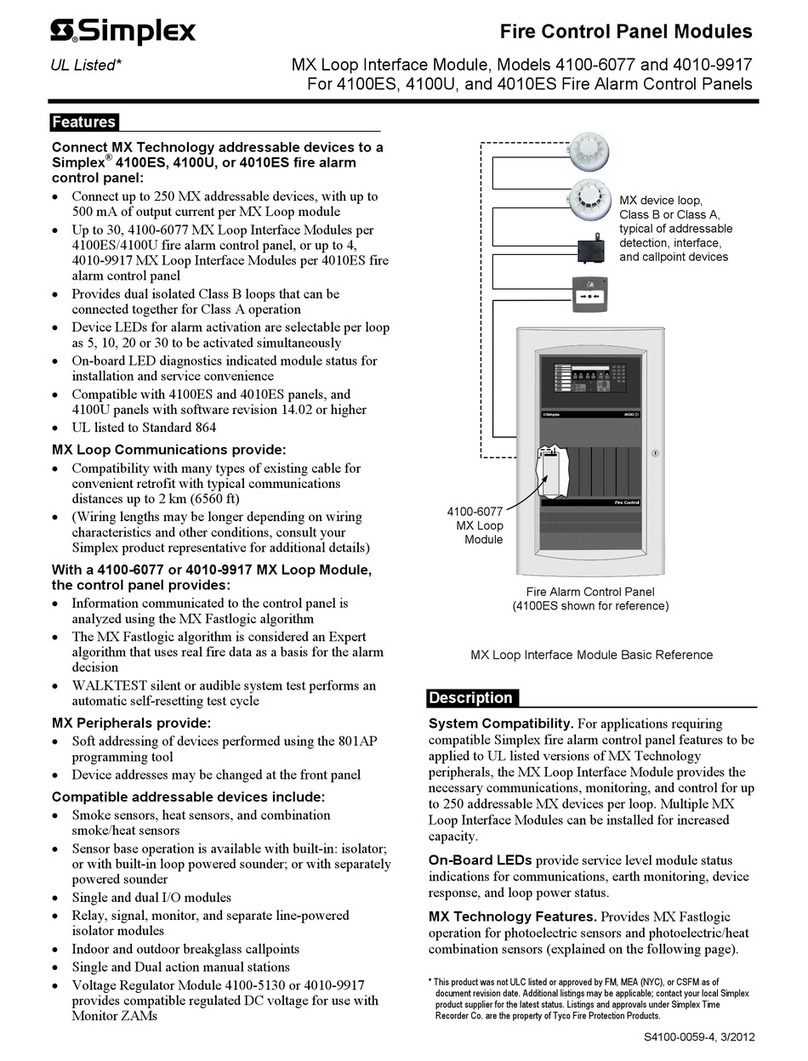
Simplex
Simplex MINIPLEX 4100ES Series quick start guide
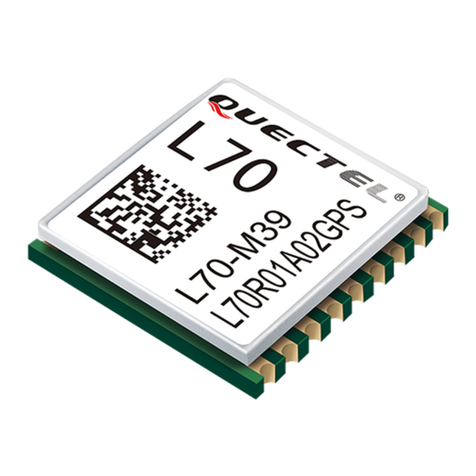
Quectel
Quectel L70 Command manual

Viessmann
Viessmann VITOSOLIC 200 Operating Instructions for the System User

Velleman
Velleman VMA410 user manual
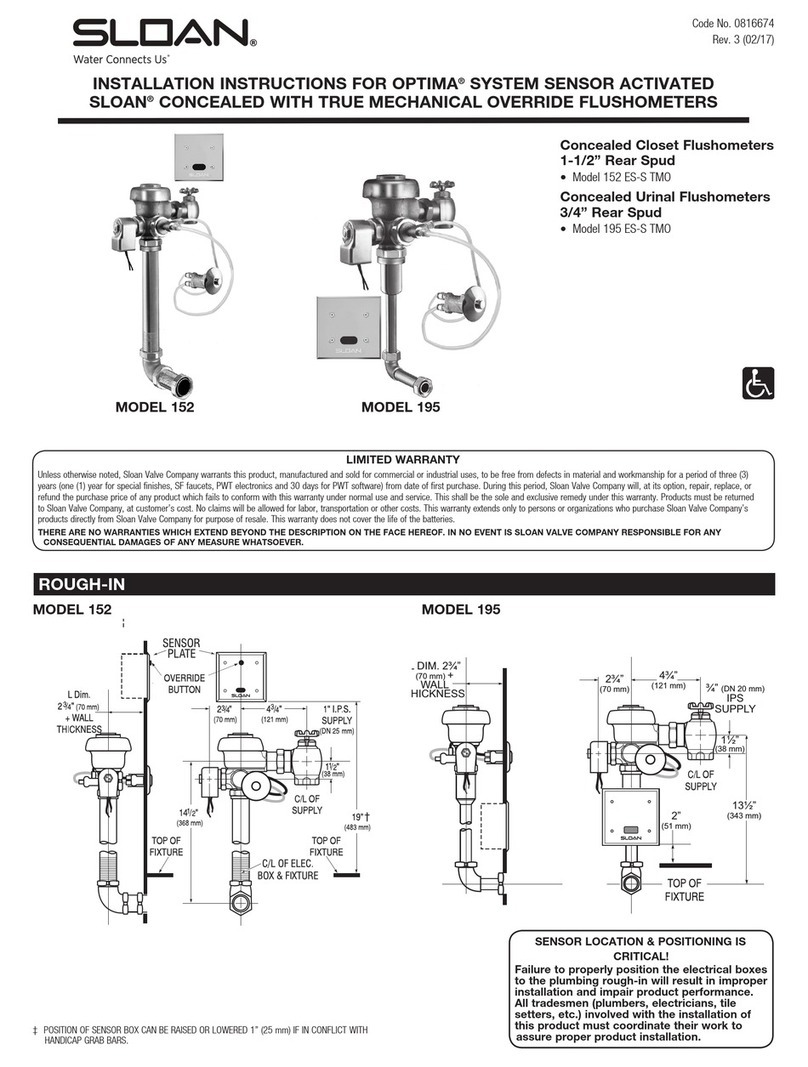
Sloan
Sloan 152 ES-S TMO SWB installation instructions

ICP DAS USA
ICP DAS USA SG-3071 quick start guide
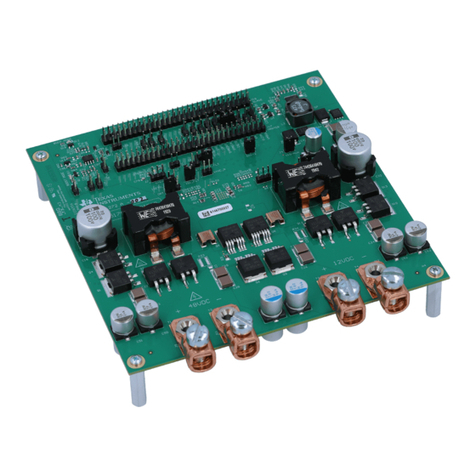
Texas Instruments
Texas Instruments LM5170-Q1 EVM user guide
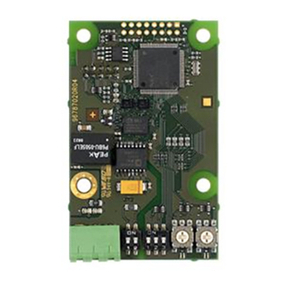
Grundfos
Grundfos CIM 200 Functional profile and user manual
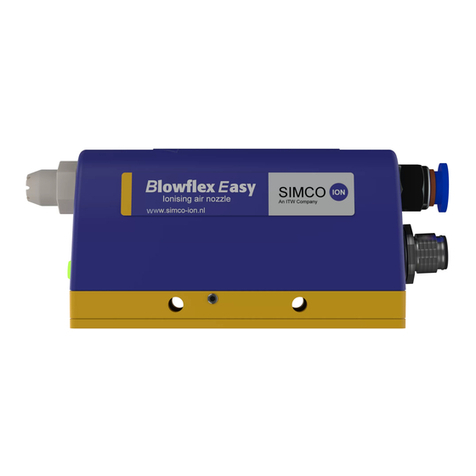
ITW
ITW SIMCO ION Blowflex Easy user manual
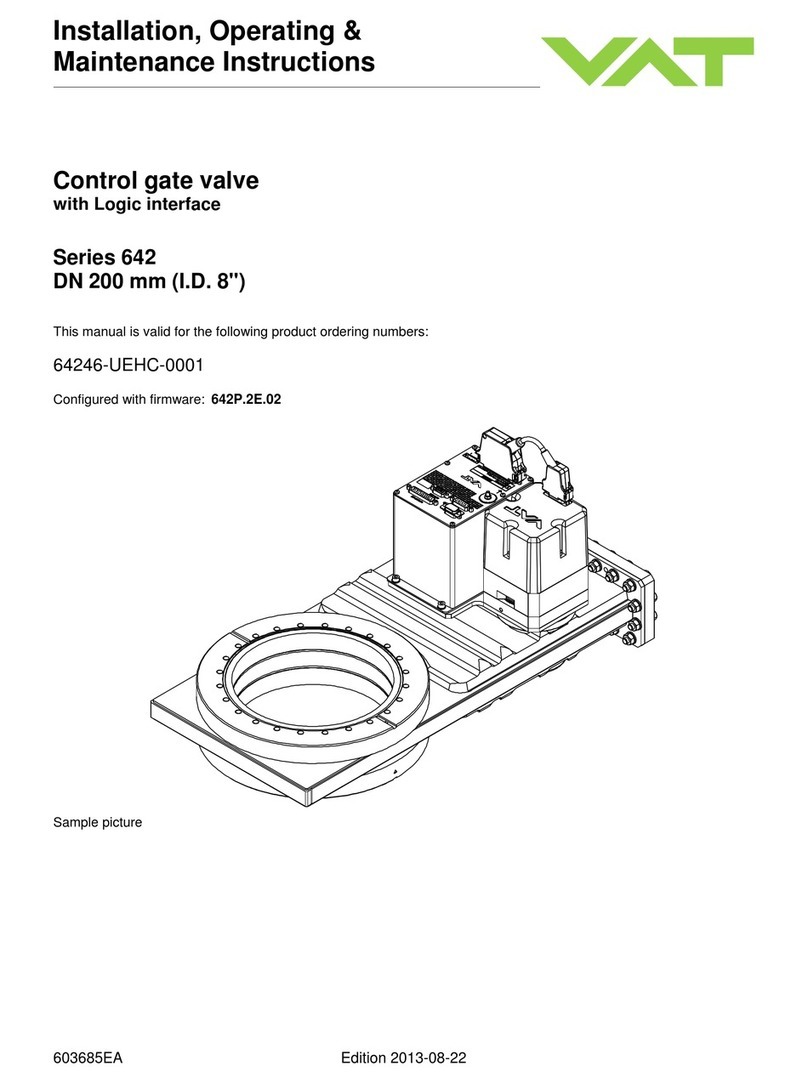
VAT
VAT 64246-UEHC-0001 Installation, operating, & maintenance instructions
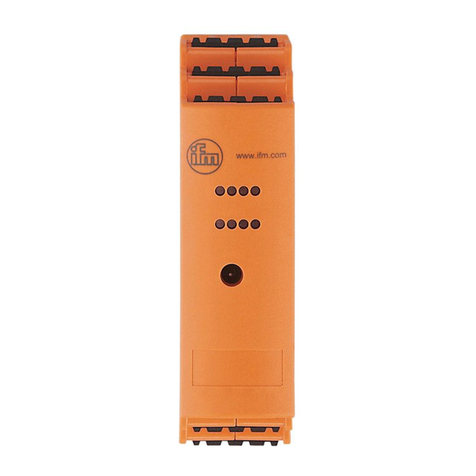
IFM
IFM AC3222 operating instructions
